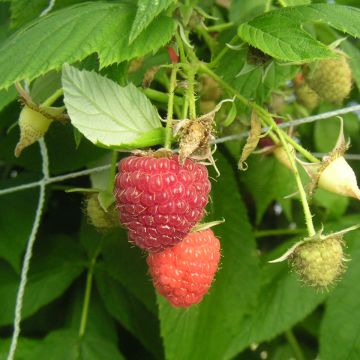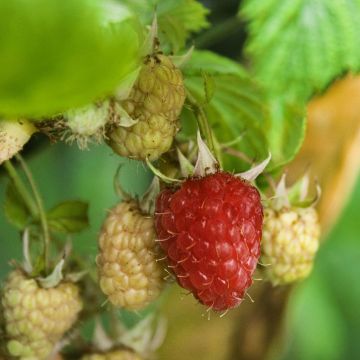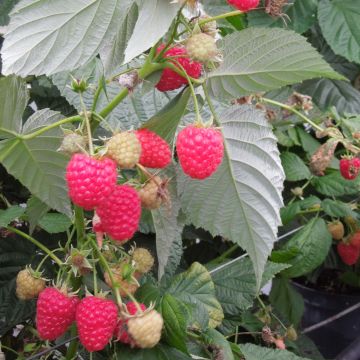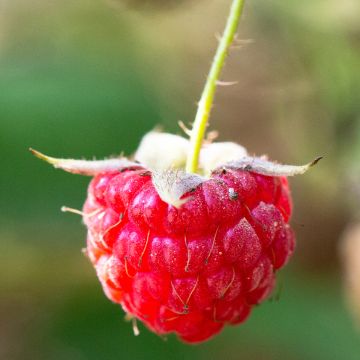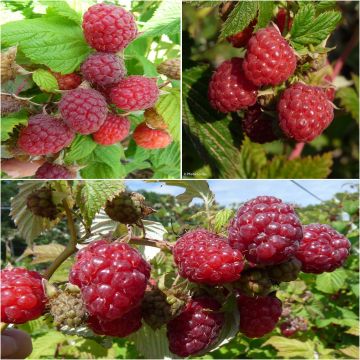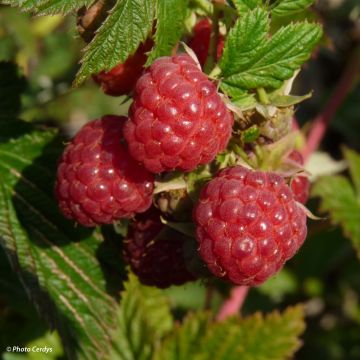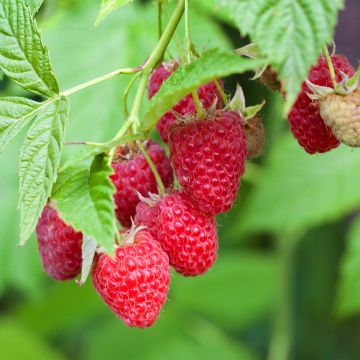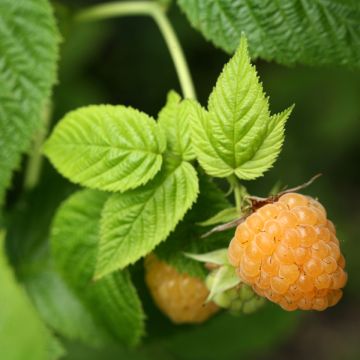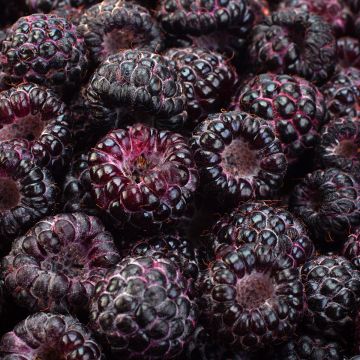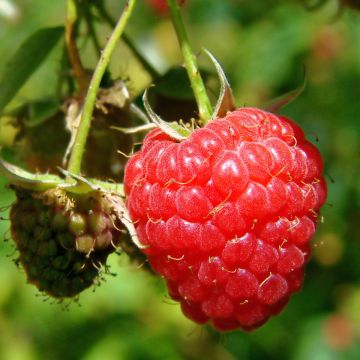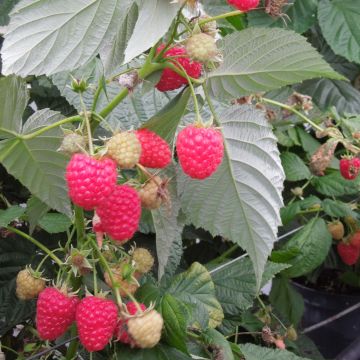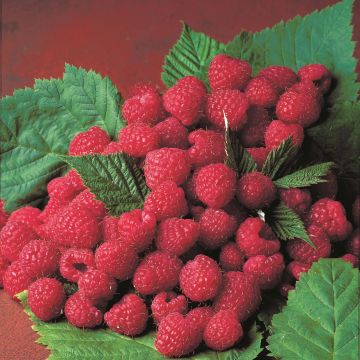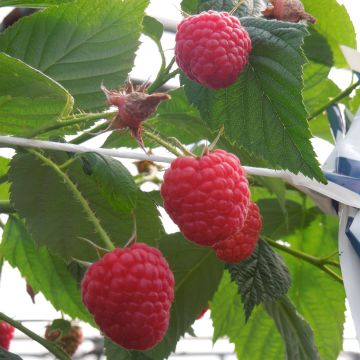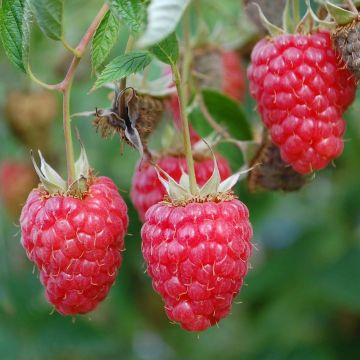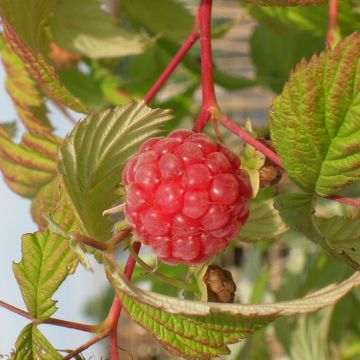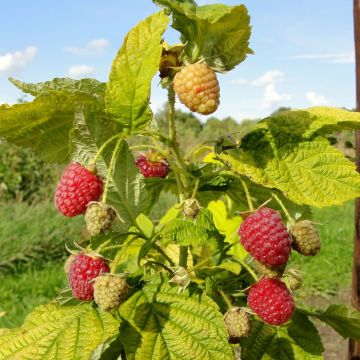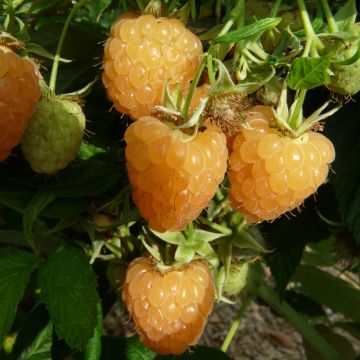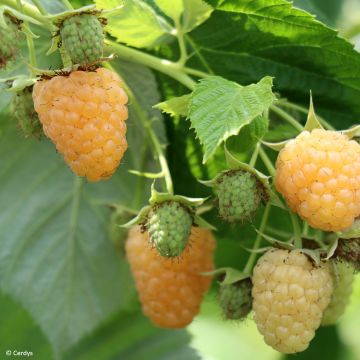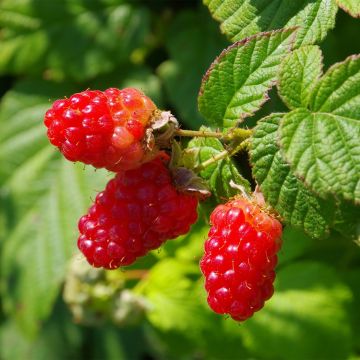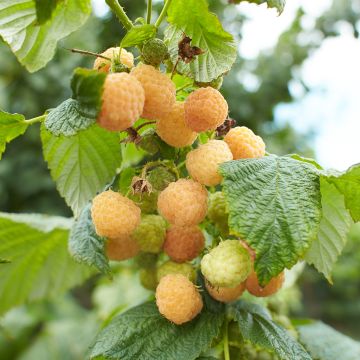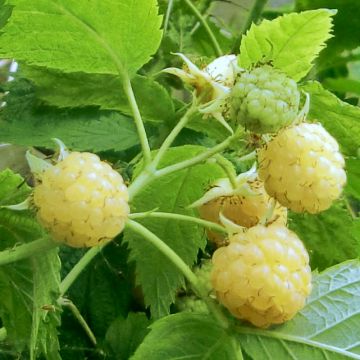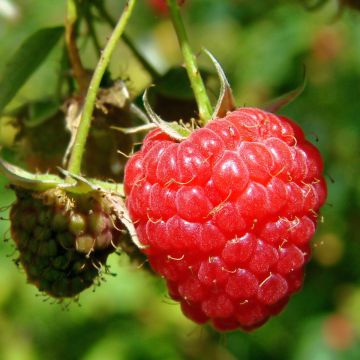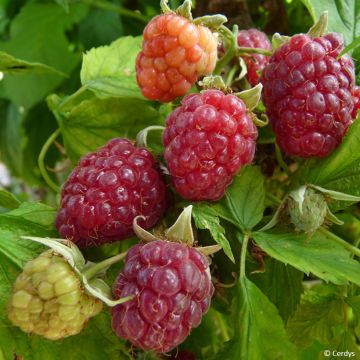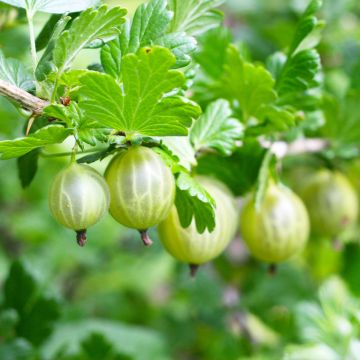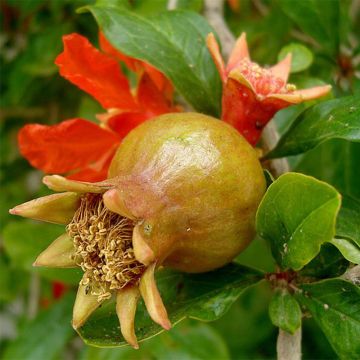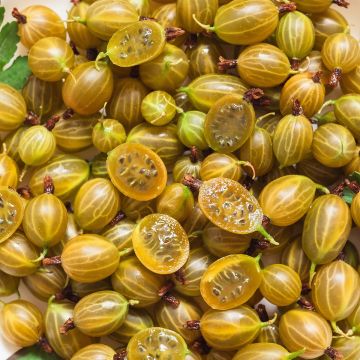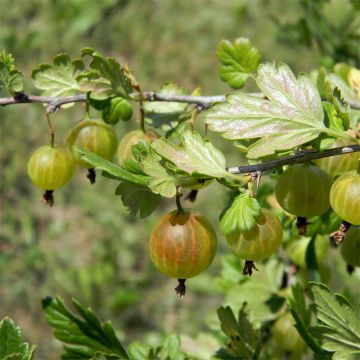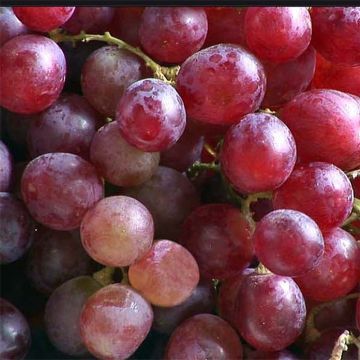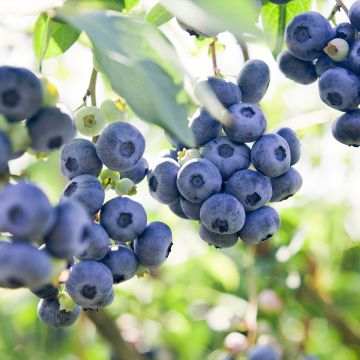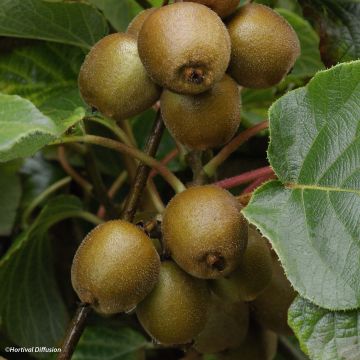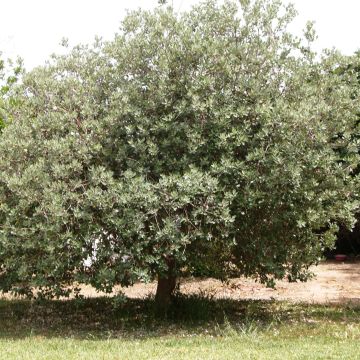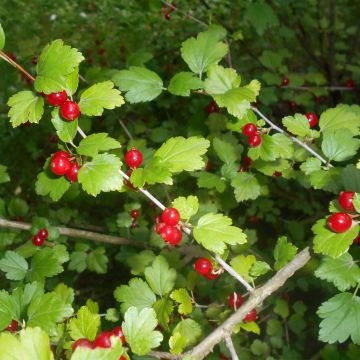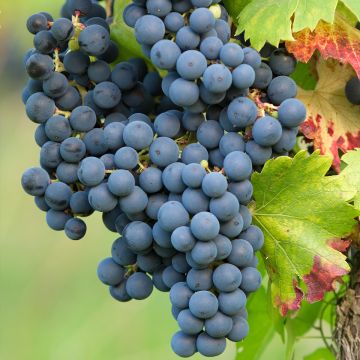Shipping country and language
Your country of residence may be:
Your country of residence is:
For a better user experience on our website, you can select:
Your shipping country:
-
Andorra
-
Austria
-
Belgium
-
Bulgaria
-
Canada
-
Chile
-
Croatia
-
Cyprus
-
Czechia
-
Denmark
-
Estonia
-
Finland
-
France
-
Germany
-
Greece
-
Hungary
-
Iceland
-
Ireland
-
Italy
-
Latvia
-
Lithuania
-
Luxembourg
-
Malta
-
Monaco
-
Netherlands
-
Poland
-
Portugal
-
Romania
-
Slovakia
-
Slovenia
-
Spain
-
Sweden
-
Switzerland
-
United Kingdom
We only deliver seed and bulb products to your country. If you add other products to your basket, they cannot be shipped.
Language:
-
French
-
German
-
Spanish
-
English
-
Italian
My Account
Hello
My wish lists
Log in / Register
Existing customer?
New customer?
Create an account to track your orders, access our customer service and, if you wish, make the most of our upcoming offers.
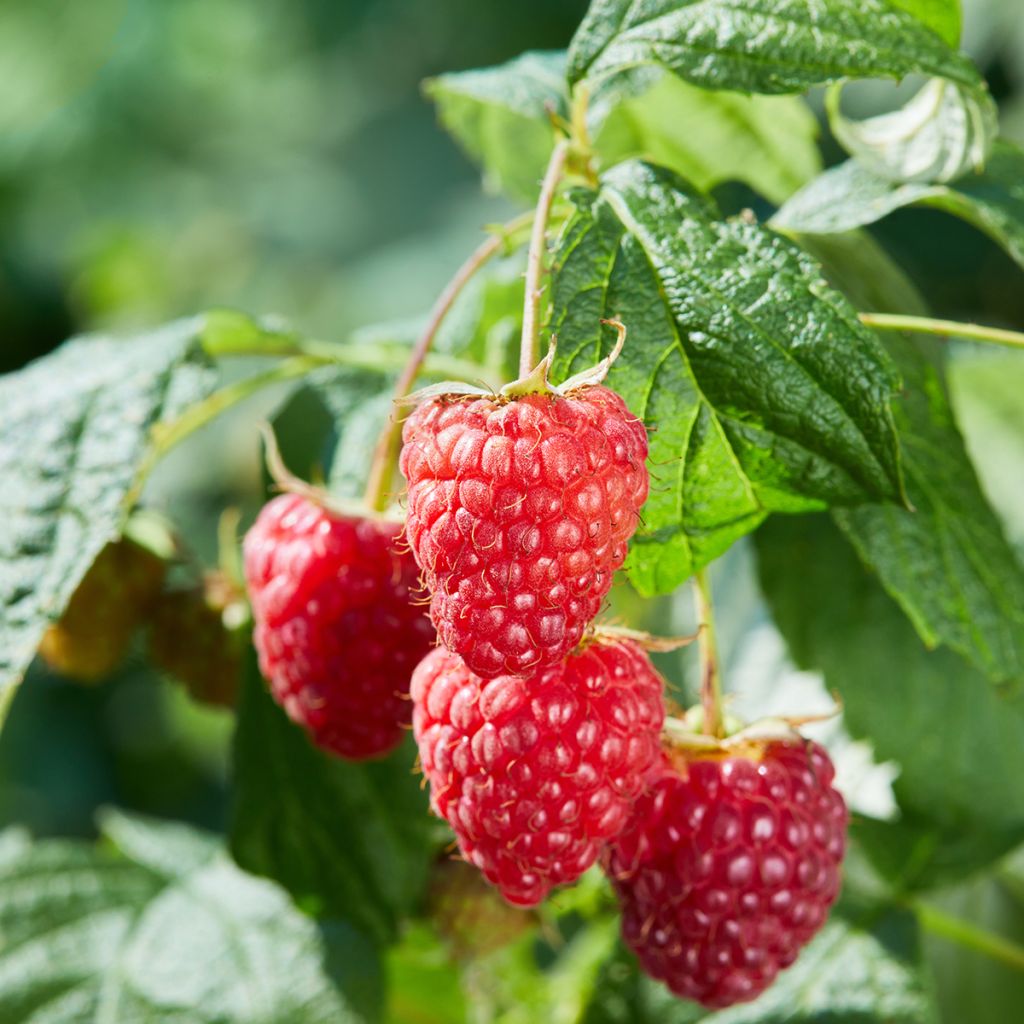

Raspberry Lowberry Baby Dwarf - Rubus idaeus
Raspberry Lowberry Baby Dwarf - Rubus idaeus
Rubus idaeus Lowberry® Baby Dwarf®
Raspberry, European raspberry, red raspberry
Why not try an alternative variety in stock?
View all →Order in the next for dispatch today!
Dispatch by letter from €3.90.
Delivery charge from €5.90 Oversize package delivery charge from €6.90.
More information
This item is not available in your country.
Schedule delivery date,
and select date in basket
This plant carries a 6 months recovery warranty
More information
We guarantee the quality of our plants for a full growing cycle, and will replace at our expense any plant that fails to recover under normal climatic and planting conditions.
From €5.90 for pickup delivery and €6.90 for home delivery
Express home delivery from €8.90.
Description
The Lowberry Baby Dwarf Raspberry is the smallest variety on the market, reaching a height of 50 cm at maturity, with very short internodes. It is ideal for container planting and for harvesting at a child's height, as well as for creating a low hedge. Baby Dwarf bears fruit on both the current year's and the previous year's canes, so from the second year onwards, it produces from June to October. Its fruits are small, aromatic and sweet, with a hint of acidity. They appear after a decorative and nectar-rich white flowering in late spring. Hardy and resistant to diseases, it is easy to grow and requires little maintenance, just give it a sunny position on a humus-rich and acidic substrate.
Rubus idaeus, commonly known as the Raspberry, is native to Europe and temperate Asia, and belongs to the Rosaceae family, like strawberries, blackberries, and wild roses. In its native habitat, it grows in cool climates in association with plants such as rowan, elderberry, or beech, with which it forms a symbiotic relationship. Optimal production starts from the third year after planting. The lifespan of the raspberry plant is about ten years. Two categories of raspberries can be distinguished: remontant varieties that provide a harvest from July-August until frost, and non-remontant varieties that have a bountiful harvest around June-July.
Rubus idaeus Lowberry Baby Dwarf is part of a range of small fruit trees and is certainly the smallest among them. It is not a high-yielding variety, but rather one to enjoy tasting on the plant for several months. It forms a bushy and very compact shrub of 50 cm in all directions. Its deciduous foliage is borne on upright canes. The canes of this variety are annual and biennial, ensuring a very remontant character. It is self-fertile but combining it with other varieties of raspberries will enhance production by staggering harvests and diversifying tastes and culinary uses. The Raspberry leaves are green on the top, whitish-green and downy on the underside. The flowers are very nectar-rich. The white, 1 to 2 cm diameter flowers, are grouped in small clusters of 10 to 12 from April-May until August. The fruits are composed of small clustered drupes, easy to detach when ripe.
The small size of the Baby Dwarf Raspberry allows it to be grown even in a planter or hanging basket on a balcony. In a small garden, it takes up little space and delights children, who can pick the fruits themselves. You can also create a small edible hedge in the vegetable garden, spacing each plant 60 cm apart. This remontant variety offers the advantage of staggered harvests for many delicious pickings. The Raspberry is a delicate fruit that needs to be carefully picked, it can be lightly rinsed with water and it keeps better in the refrigerator. Harvesting is easy and it is very enjoyable to taste the fruits on the spot, or to pick them for various culinary uses: sorbets, coulis, jams, tiramisu, crumble, not to mention the traditional raspberry tart. Low in calories, but rich in minerals (calcium, magnesium, iron), vitamin C and K, fibre, and antioxidants, raspberries, like other small fruits, contribute to a balanced diet.
Report an error about the product description
Plant habit
Fruit
Flowering
Foliage
Botanical data
Rubus
idaeus
Lowberry® Baby Dwarf®
Rosaceae
Raspberry, European raspberry, red raspberry
Cultivar or hybrid
Other Raspberry plants
Planting and care
The Lowberry Baby Dwarf Raspberry prefers humus-bearing, rich soils that retain moisture, even in summer, without too much limestone. It appreciates a sunny exposure. Plant it from October to March in ordinary soil, enriched with compost and well-rotted manure.
Space the plants every 60 cm on rows spaced 1 m apart. During planting, the collar should be level with the ground. It is recommended to train them with wire stretched between stakes or on a trellis.
Water regularly to promote root growth in the first year. During periods of high heat or prolonged drought, provide additional water. Weed the surface, especially at the beginning of planting, and apply a mulch to maintain moisture in summer.
For container cultivation: use a mix of potting soil and topsoil, with a drainage layer at the bottom of the perforated pot. Feed your raspberry with compost or fruit fertiliser and water regularly to keep the substrate slightly moist, but not waterlogged.
Raspberries can be susceptible to various diseases if the growing conditions are not optimal (raspberry anthracnose, raspberry rust, powdery mildew, grey mould in rainy periods, or Botrytis). The damage observed in cultivation is normally due to unfavourable weather conditions, especially during cold springs that allow micro-fungi present in the soil to infest the vegetation. To protect the plants, nourish the raspberries with organic fertilisers that promote the multiplication of anaerobic bacteria in the soil, which strengthens the soil's ability to stimulate the plant's immune system. Raspberries can also be attacked by certain parasites such as the raspberry worm, the larva of a small beetle that lodges in the fruits without causing significant damage.
Raspberries can easily multiply through suckers that grow near the base: remove them and replant them in another part of the garden if desired.
Planting period
Intended location
Care
This item has not been reviewed yet - be the first to leave a review about it.
Berries
Haven't found what you were looking for?
Hardiness is the lowest winter temperature a plant can endure without suffering serious damage or even dying. However, hardiness is affected by location (a sheltered area, such as a patio), protection (winter cover) and soil type (hardiness is improved by well-drained soil).

Photo Sharing Terms & Conditions
In order to encourage gardeners to interact and share their experiences, Promesse de fleurs offers various media enabling content to be uploaded onto its Site - in particular via the ‘Photo sharing’ module.
The User agrees to refrain from:
- Posting any content that is illegal, prejudicial, insulting, racist, inciteful to hatred, revisionist, contrary to public decency, that infringes on privacy or on the privacy rights of third parties, in particular the publicity rights of persons and goods, intellectual property rights, or the right to privacy.
- Submitting content on behalf of a third party;
- Impersonate the identity of a third party and/or publish any personal information about a third party;
In general, the User undertakes to refrain from any unethical behaviour.
All Content (in particular text, comments, files, images, photos, videos, creative works, etc.), which may be subject to property or intellectual property rights, image or other private rights, shall remain the property of the User, subject to the limited rights granted by the terms of the licence granted by Promesse de fleurs as stated below. Users are at liberty to publish or not to publish such Content on the Site, notably via the ‘Photo Sharing’ facility, and accept that this Content shall be made public and freely accessible, notably on the Internet.
Users further acknowledge, undertake to have ,and guarantee that they hold all necessary rights and permissions to publish such material on the Site, in particular with regard to the legislation in force pertaining to any privacy, property, intellectual property, image, or contractual rights, or rights of any other nature. By publishing such Content on the Site, Users acknowledge accepting full liability as publishers of the Content within the meaning of the law, and grant Promesse de fleurs, free of charge, an inclusive, worldwide licence for the said Content for the entire duration of its publication, including all reproduction, representation, up/downloading, displaying, performing, transmission, and storage rights.
Users also grant permission for their name to be linked to the Content and accept that this link may not always be made available.
By engaging in posting material, Users consent to their Content becoming automatically accessible on the Internet, in particular on other sites and/or blogs and/or web pages of the Promesse de fleurs site, including in particular social pages and the Promesse de fleurs catalogue.
Users may secure the removal of entrusted content free of charge by issuing a simple request via our contact form.
The flowering period indicated on our website applies to countries and regions located in USDA zone 8 (France, the United Kingdom, Ireland, the Netherlands, etc.)
It will vary according to where you live:
- In zones 9 to 10 (Italy, Spain, Greece, etc.), flowering will occur about 2 to 4 weeks earlier.
- In zones 6 to 7 (Germany, Poland, Slovenia, and lower mountainous regions), flowering will be delayed by 2 to 3 weeks.
- In zone 5 (Central Europe, Scandinavia), blooming will be delayed by 3 to 5 weeks.
In temperate climates, pruning of spring-flowering shrubs (forsythia, spireas, etc.) should be done just after flowering.
Pruning of summer-flowering shrubs (Indian Lilac, Perovskia, etc.) can be done in winter or spring.
In cold regions as well as with frost-sensitive plants, avoid pruning too early when severe frosts may still occur.
The planting period indicated on our website applies to countries and regions located in USDA zone 8 (France, United Kingdom, Ireland, Netherlands).
It will vary according to where you live:
- In Mediterranean zones (Marseille, Madrid, Milan, etc.), autumn and winter are the best planting periods.
- In continental zones (Strasbourg, Munich, Vienna, etc.), delay planting by 2 to 3 weeks in spring and bring it forward by 2 to 4 weeks in autumn.
- In mountainous regions (the Alps, Pyrenees, Carpathians, etc.), it is best to plant in late spring (May-June) or late summer (August-September).
The harvesting period indicated on our website applies to countries and regions in USDA zone 8 (France, England, Ireland, the Netherlands).
In colder areas (Scandinavia, Poland, Austria...) fruit and vegetable harvests are likely to be delayed by 3-4 weeks.
In warmer areas (Italy, Spain, Greece, etc.), harvesting will probably take place earlier, depending on weather conditions.
The sowing periods indicated on our website apply to countries and regions within USDA Zone 8 (France, UK, Ireland, Netherlands).
In colder areas (Scandinavia, Poland, Austria...), delay any outdoor sowing by 3-4 weeks, or sow under glass.
In warmer climes (Italy, Spain, Greece, etc.), bring outdoor sowing forward by a few weeks.
